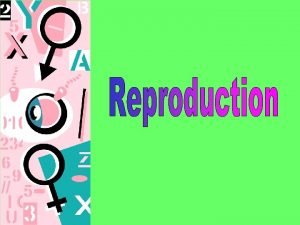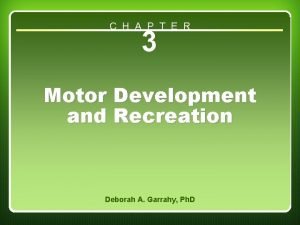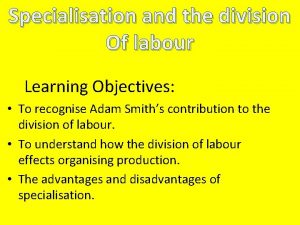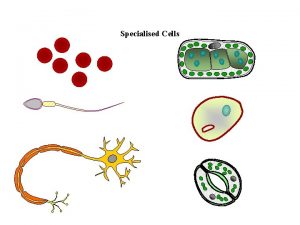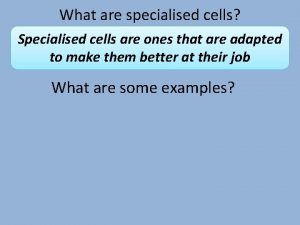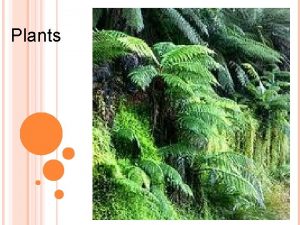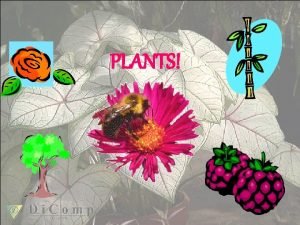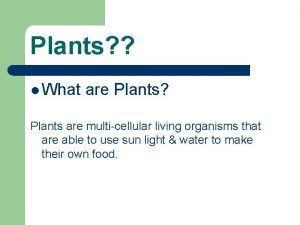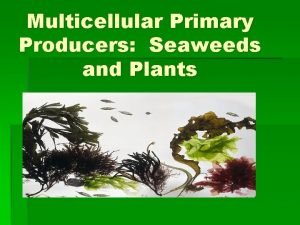Specialised Cells Plants and animals are multicellular consist









- Slides: 9

Specialised Cells • Plants and animals are multicellular (consist of many cells). • They contain many different types of cells. • Each type of cell is designed to carry out a particular job or function. • This is known as CELL SPECIALISM • Not all cells look the same. • Some cells have a special shape and features to help them do a certain job.

Sperm cell • Designed to Fertilise eggs. Head contains enzymes & nucleus • Found in the Testes Tail • A sperm is small and has a long tail that provides movement so it can swim and find an egg cell. • The head contains enzymes which allow it to digest into an egg cell and join with it.

Egg (Ovum) Cell Cytoplasm containing yolk • Designed to be Fertilised. • Found in the Ovaries. • An egg cell is large and bulky. Layer of jelly • Contains yolk which provides a large food store for the new cell being Nucleus formed.

Palisade Cell • Designed for Photosynthesis Nucleus • Found in the top of a leaf • Tall and has a large surface area to absorb water and minerals. • Packed with chloroplasts to help make plant food. Chloroplasts

Ciliated Cell • Designed to stop Lung Damage Nucleus • They line all the air passages in the lungs. • They have tiny hairs called cilia • Hairs sweep mucus with trapped dust and bacteria back up the throat.

Root Hair Cell • Designed for absorbing. Vacuole • Thin cell wall makes it easy for minerals to pass through. thin cell wall • Has a large surface which helps it to absorb water and minerals. Cell membrane • Found in a plant root.

Nerve Cell (neurone) Nucleus • They are long • They have connections at each end • Can carry electrical signals • Their job is to carry nerve impulses to different parts of the body.

Red Blood Cell • Designed to carry oxygen • Found in blood. • Large surface area, for oxygen to pass through. • Contains haemoglobin, which joins with oxygen. • Has no nucleus

Questions 1. 2. 3. 4. 5. 6. 7. Why are nerve cells so long? Where are egg cells found? What is palisade cell specialised to do? Why does a root hair cell have a thin wall? The hairs in a ciliated cell are known as? What is a sperm cell designed to do? How are red blood cells different from other cells?

